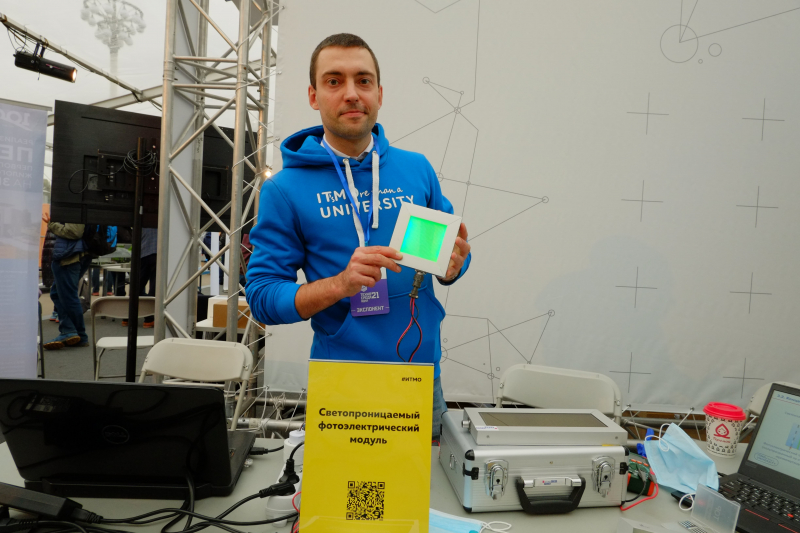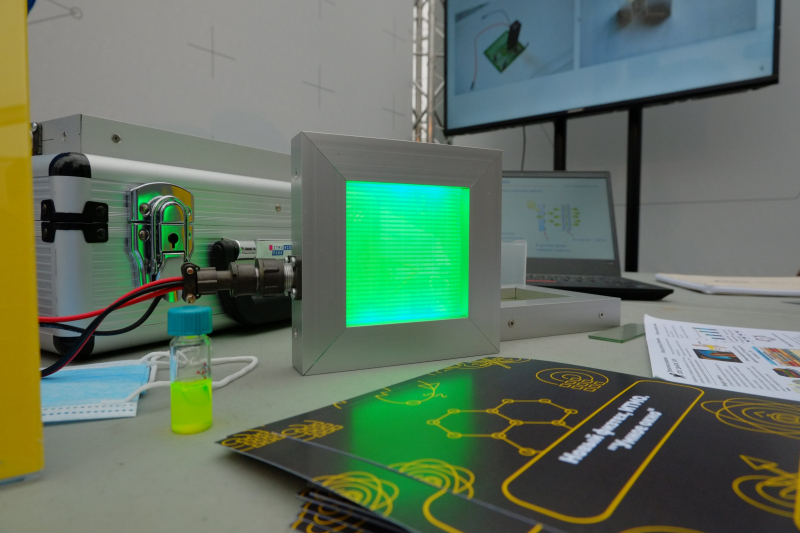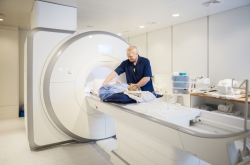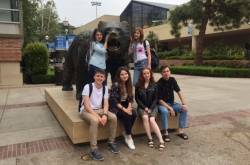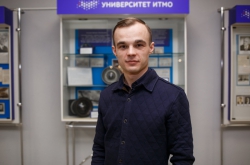Held for the first time, the Technosreda exhibition was organized by the Russian Ministry of Science and Higher Education to mark the Year of Science and Technology in Russia.
The festival brought together more than 150,000 viewers. The organizers prepared around 10 pavilions for projects by various universities, researchers, developers, and aspiring inventors, as well as special zones for children, VR movie theaters, and two areas for workshops delivered by the Polytechnic Museum.
The exhibition also offered a series of business events, during which various experts had the chance to discuss digitalization and artificial intelligence, medicine of the future, smart vehicles, and other cutting-edge technologies. Among the speakers were representatives from the Russian Ministry of Science and Higher Education, top-ranked universities, high-tech and IT companies, including Yandex and Mail.ru Group, as well as art and cinema sectors: well-known director Timur Bekmambetov and new media artist Helena Nikonole.
Innovative medicine
Scientists from ITMO’s Infochemistry Scientific Center shared their achievements in the field of future medicine. The center’s senior researcher Svetlana Ulasevich demonstrated a new generation of biomimetic materials. The scientist proposed to use hydroxyapatite, the main mineral component of human teeth and bones, to create special systems that will allow researchers to study the features of bone formation and growth, as well as to conduct experiments with their composition. For instance, antibiotics can be beneficial in mitigating the effects of infectious diseases like osteoporosis and osteomyelitis. The proposed systems may potentially help scientists treat various bone defects.
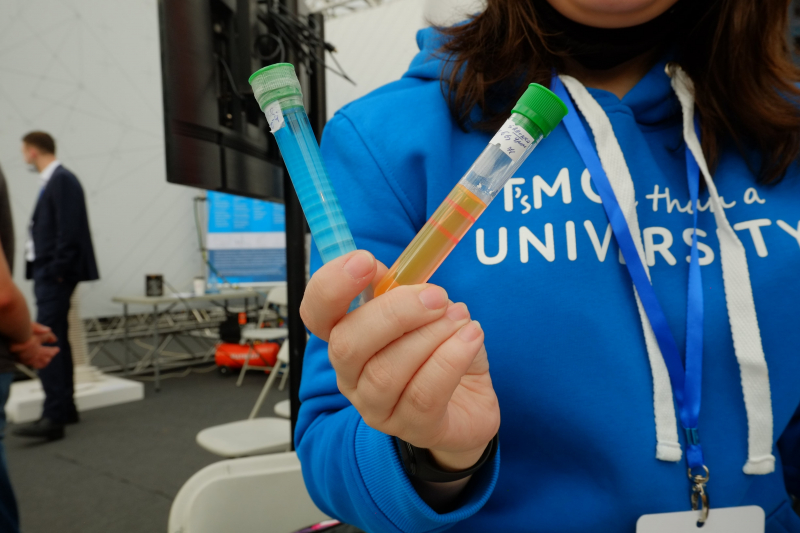
The next-gen biomimetic materials based on hydroxyapatite. Photo courtesy of Ekaterina Shevyreva, ITMO.NEWS
Children, too, were impressed by the scientist’s project. They couldn’t take their eyes off the various laboratory samples: glass flasks with multi-colored liquids, cell cultures in tubes, and so on. During the exhibition, the author shared that it takes a certain touch to talk about such a complicated and unconventional work with kids rather than fellow scientists.
“I’ve had a bit of practice. My nephews are always asking me about my work, and I usually laugh it off. But now, they got older and more persistent, so I can’t but share some bits of my work with them. It’s quite an interesting experience as I have to dive even deeper into the material to be able to explain it to people with different backgrounds. And conferences will be easier if you can explain your project to a five-year-old,” says Svetlana Ulasevich.
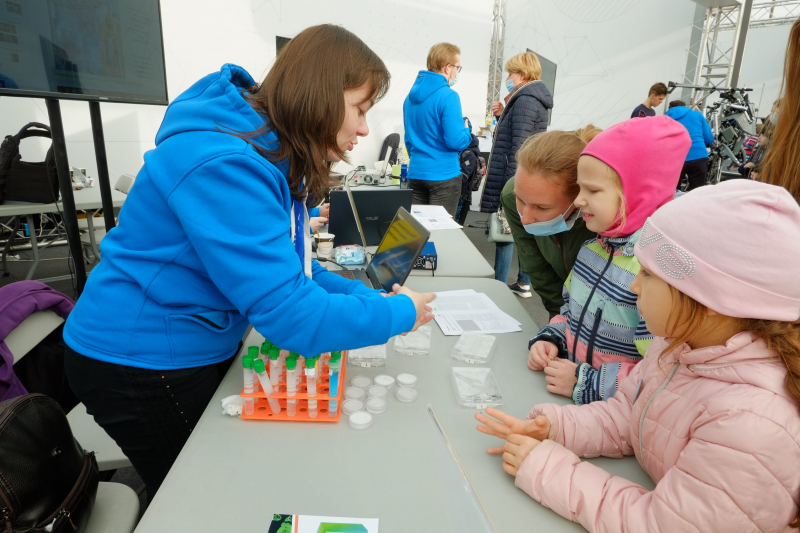
Svetlana Ulasevich. Photo courtesy of Ekaterina Shevyreva, ITMO.NEWS
The center also actively studies multipurpose and portable sensor platforms capable of simultaneously detecting a wide range of biomarkers in record time (no more than 15 minutes).
ITMO PhD students presented not one but two similar systems at the exhibition. Anna Stekolschikova, a PhD student at ITMO’s ChemBio Cluster and an engineer at ITMO’s Infochemistry Scientific Center, presented a diagnostic platform made to detect bacterial pathogens, particularly Staphylococcus Aureus, which she started as a Master’s student. The platform is made up of electrochemical sensors based on printed electrodes, a potentiostat that receives and processes incoming signals, and software that provides visible outcomes. At the moment, the developers modify the system to detect biomarkers, too, including the level of zinc and other micronutrients.
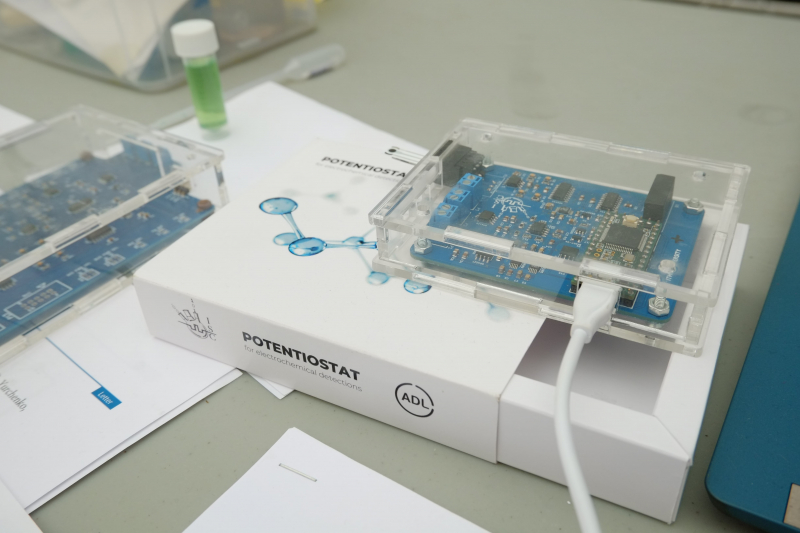
The diagnostic platform for the detection of bacterial pathogens. Photo courtesy of Ekaterina Shevyreva, ITMO.NEWS
A similar device for detecting antibiotics, bacteria, and viruses was demonstrated by Phillip Lavrentyev, a Master’s student at ITMO’s Infochemistry Scientific Center. His sensor made of a liquid metal uses volt-ampere curves to analyze data and machine learning methods to process the obtained information. As noted by Phillip, the project aroused the interest of the public despite its complex nature.
“Many people approached me with questions about my project, and I think it’s great because science is interesting for kids, too. Yet it’s quite challenging to explain your project to someone who has no experience. I only took part in various conferences, and there you usually use specific terms, which may make no sense to children,” shares the author of the project.
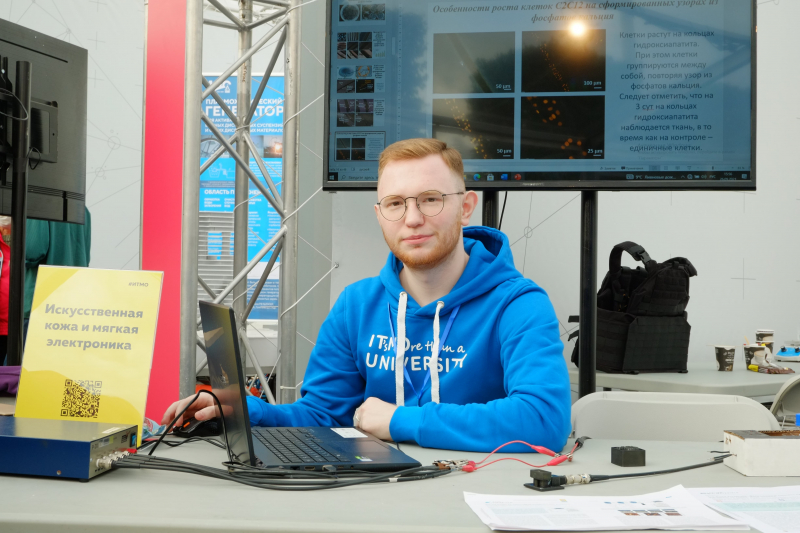
Phillip Lavrentyev. Photo courtesy of Ekaterina Shevyreva, ITMO.NEWS
Robots are coming
Robots, nevertheless, received the most attention at the exhibition. There were cleaning and waste sorting robots, robot assistants and football players, as well as medical and military exoskeletons. The project of Alexey Ledyukov, a student at ITMO’s Faculty of Control Systems and Robotics, struck a chord with the public. His pneumatic-powered exoskeleton, which can be used for running, jumping, lifting weights, and even dancing, impressed both children and adults.
The student used a 3D printer to create the prototype and manually covered it in carbon fiber. At the moment, the laboratory staff is working their way to a more advanced model. The new robot will be silicone-based, custom-fitted, and more aesthetically pleasing with all the wires hidden inside the robot body. Its main feature, bedside greater mobility, is accessibility.

Alexey Ledyukov wearing the exoskeleton. Photo courtesy of Ekaterina Shevyreva, ITMO.NEWS
“Our exoskeleton is based on pneumatic components and hence much cheaper compared to foreign analogs, which often can only be rented. It will cost about 2 million rubles for small-scale production and 1.5 million for large-scale production. The robot is powered by a high-pressure compressed air cylinder and can be controlled through pressure sensors located along the perimeter of the body. When a person lifts their arm, the distributor, which controls air channels, receives data on the movement vector and speed and thus activates the drive unit,” explains Alexey Ledyukov.
The faculty’s other project is a robot created jointly with the Sberbank Robotics Laboratory. The researchers designed an anthropomorphic grip that can be adapted for both small and large objects, including round ones. This was made possible thanks to built-in variable length links, which not only make the robot more flexible and versatile but also require fewer engines.
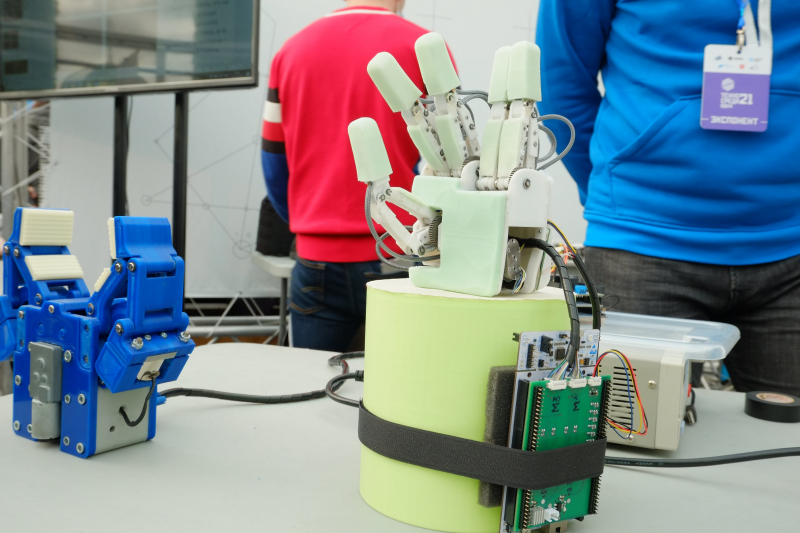
The anthropomorphic robot hand. Photo courtesy of Ekaterina Shevyreva, ITMO.NEWS
Dmitry Ivolga, the developer of the robot arm and a PhD student at ITMO’s Faculty of Control Systems and Robotics, believes that the vast presence of robot devices at the exhibition vividly demonstrates appreciation for Russian scientists.
“The exhibition turned out extremely interesting for both adults and children. It yielded many projects from various universities. I even found ones that I had only read or heard about before. Clearly, there is a great deal of quite forward-looking products on the market. Yet many might say that Russia is not generally associated with robotic advances, which may be true for ready-made solutions but not research. We have many enthusiastic people who do science for science,” comments Dmitry Ivolga.
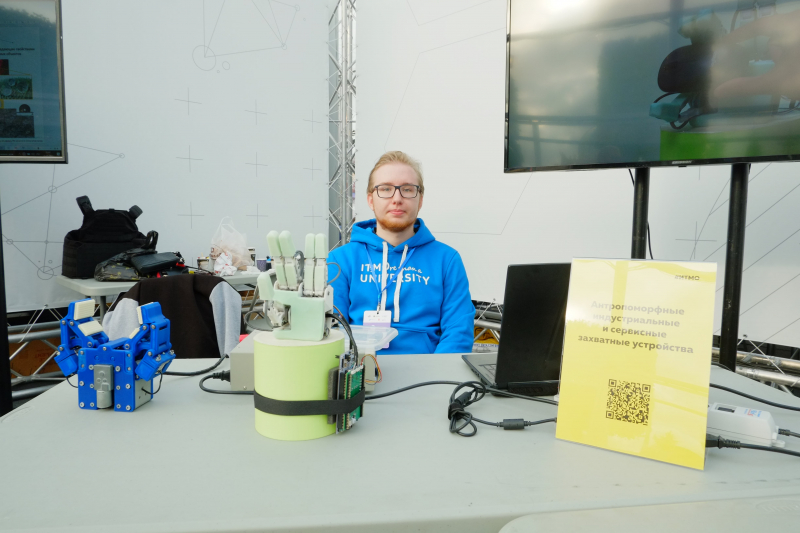
Dmitry Ivolga. Фото: Photo courtesy of Ekaterina Shevyreva, ITMO.NEWS
Unearthing materials
ITMO’s Faculty of Physics was represented by the Laboratory of Hybrid Nanophotonics and Optoelectronics engaged in perovskite materials and the International Laboratory of Applied Radioengineering specialized in metasurface-based devices for magnetic resonance imaging (MRI). The faculty’s researchers proposed a new generation of high-sensitivity radiofrequency coils for breast MRI. Created in collaboration with the Almazov National Medical Research Centre, the MetaCoil project has already been displayed at various exhibitions and conferences and supported by the Government of St. Petersburg.
In turn, a special metamaterial pad for the enhancement of abdominal cavity images in ultra-high-field MRI systems was demonstrated to spectators for the first time. First and foremost, the technology will affect overweight people or pregnant women. The exhibition became a debut for co-author Anna Kalugina, too.
“We’ve not presented our project until now. I didn’t even expect to see so many people being so excited about our idea. It’s a good thing! It means people are interested in technology and science,” she says.
This was also the first exhibition for the Perolab laboratory. The lab’s senior researcher Eduard Danilovsky decided to demonstrate one of the team’s most vivid and interesting projects. The Smart Window was created with the use of solar cells, a phosphor layer (quantum perovskite dots based on cesium), and a control module. This device is one of the laboratory's seven joint startups with the North-West Technology Transfer Center.
“Our team creates materials that don’t exist in nature and looks for ways to apply them. The Smart Window illustrates the potential for such materials, namely cesium-based quantum perovskite dots. The high efficiency of this luminophore made it possible to develop a light-transmitting photovoltaic module with a backlight. This is a joint project with our colleagues from the Faculty of Control Systems and Robotics who developed a control module using electricity from photocells. Such technologies can pave the way for smart bus stations. They could charge display boards and turn on the backlight in the evening,” explains the developer.
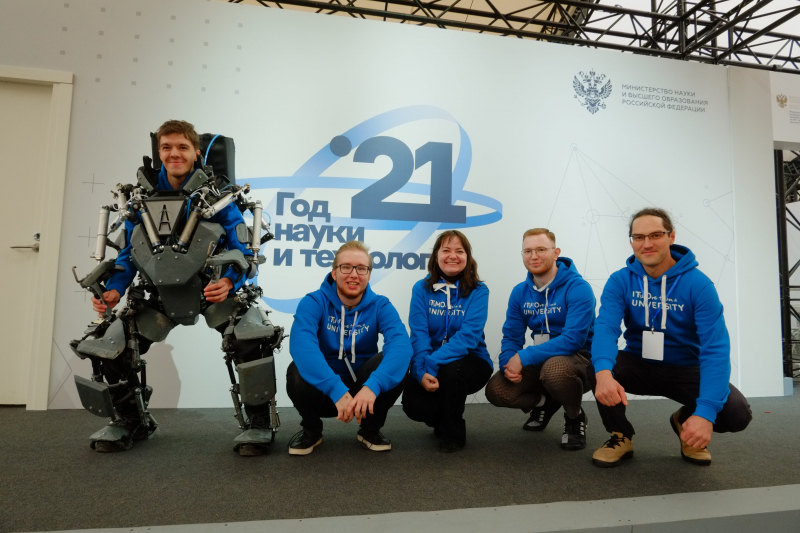
ITMO researchers at the Technosreda exhibition. Photo courtesy of Ekaterina Shevyreva, ITMO.NEWS
All researchers from ITMO University view such exhibitions as a great chance not only to meet like-minded people and speak about science but also to attract prospective students to the university.

